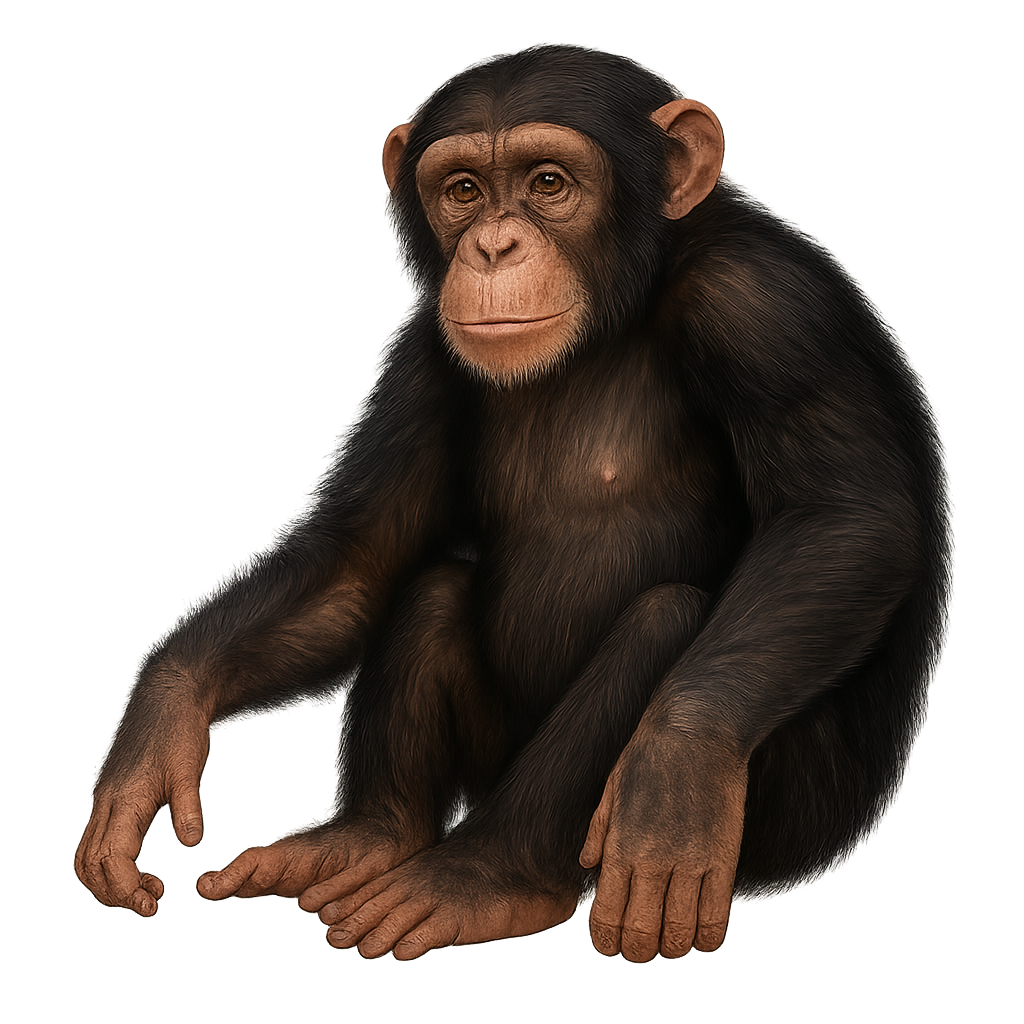Your wildlife photography guide.
Explore the chimpanzee in detail, study its behavior, prepare your shots.
Where to observe and photograph the chimpanzee in the wild
Learn where and when to spot the chimpanzee in the wild, how to identify the species based on distinctive features, and what natural environments it inhabits. The WildlifePhotographer app offers tailored photography tips that reflect the chimpanzee’s behavior, helping you capture better wildlife images. Explore the full species profile for key information including description, habitat, active periods, and approach techniques.
Chimpanzee
Scientific name: Pan troglodytes

IUCN Status: Endangered
Family: HOMINIDAE
Group: Mammals
Sensitivity to human approach: Shy
Minimum approach distance: 70 m
Rut period: March to July
Gestation: 230-240 jours
Births: October to November
Habitat:
Tropical forests and wooded savannas
Activity period :
Primarily active during the day, with peak activity in the morning and late afternoon.
Identification and description:
The Chimpanzee is one of humans' closest relatives, sharing about 98% of its DNA with humans. This large primate is easily recognizable by its expressive face, dark or brown skin, and sharp eyes. It has a powerful body, although it is smaller and less robust than other large primates like the gorilla. The Chimpanzee primarily inhabits tropical forests and savannas in West and Central Africa, where it forms complex social groups, called communities, which can include several dozen individuals.
An omnivore, the Chimpanzee feeds on a wide range of foods, including fruits, leaves, insects, and sometimes meat. It is also known for its use of tools, such as sticks to extract termites or stones to crack nuts. This primate has exceptional intelligence, capable of solving complex problems, communicating in sophisticated ways, and adopting cultural behaviors. However, it is threatened by deforestation, poaching, and habitat loss, leading to a decline in its wild populations. The chimpanzee is classified as an endangered species.
Recommended lens:
300 mm – adjust based on distance, desired framing (portrait or habitat), and approach conditions.
Photography tips:
Approach slowly and discreetly, as chimpanzees can be sensitive to human presence and may become nervous if disturbed.
Photograph during the golden hours (early morning or late afternoon), when the light is soft and highlights facial expressions and fur details.
Capture social moments: Chimpanzees are highly social animals, so observe and photograph interactions between group members — often very expressive.
Be patient: Wait for the group to become active, whether foraging, playing, or interacting with each other.
The chimpanzee is an endangered species, mainly due to habitat loss and hunting. Always respect their space and do not disturb their natural behavior. Follow local conservation rules and make sure not to disrupt this precious and vulnerable animal.
The WildlifePhotographer App is coming soon!
Be the first to explore the best nature spots, track rutting seasons, log your observations, and observe more wildlife.
Already 1 430 wildlife lovers subscribed worldwide

